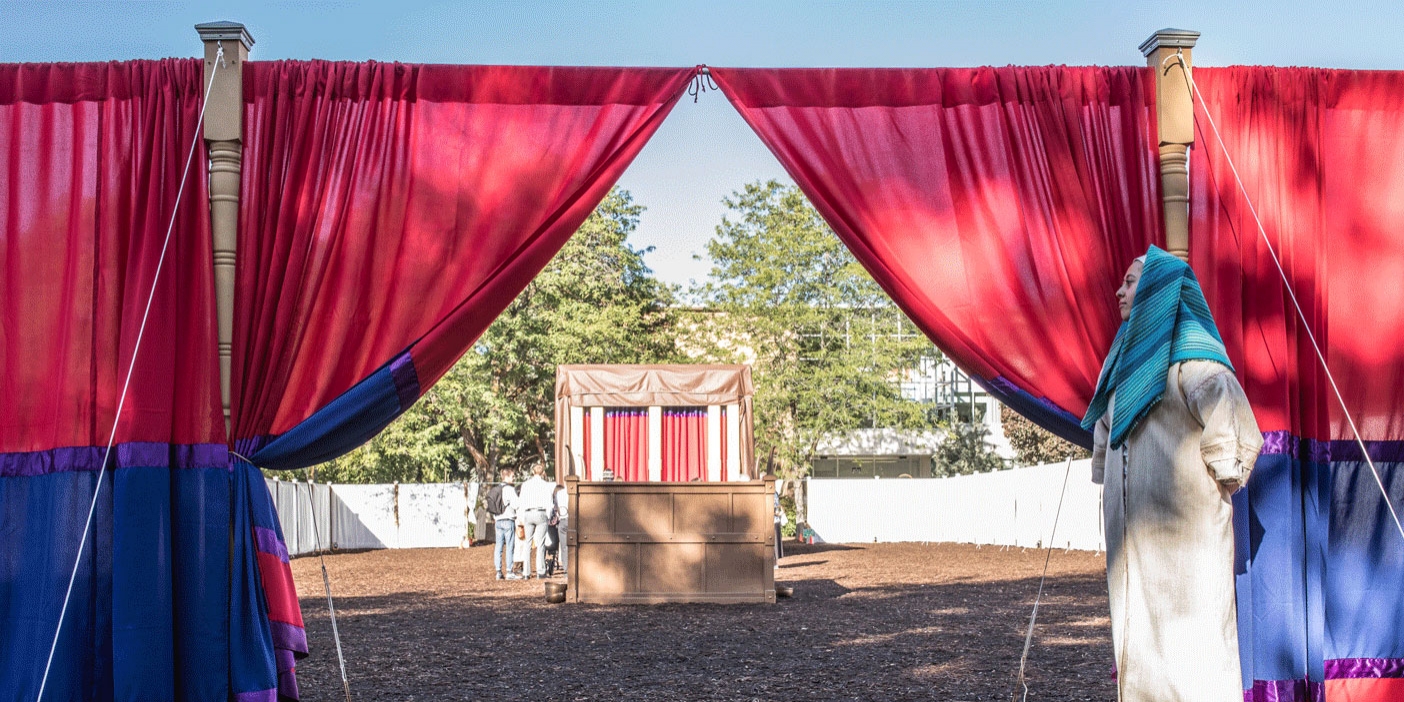By Shea N. Cutler
He rushes across the dry, broken ground from plant to plant, delighted with the progress of his project. Even after 20 years, vigor and enthusiasm radiate from Dr. Howard Stutz at mention of the word Atriplex.
To many, this weedy-looking cause for rejoicing may be just a large weed. But to the New Mexico operations of Broken Hills Proprietary, an Australian mining company, Atriplex, a gray-green desert shrub, is a savior, and to Stutz, it is a passion of a lifetime.
Twenty years ago the company approached Stutz, now a professor emeritus in the Botany and Range Science Department, and asked him to use the genetically diverse plants he was researching to reclaim the arid desert lands of northern New Mexico where they had been strip mining for coal.
“Dr. Stutz was brought in with the hope that he could, through genetic variations that occur naturally and through additional variation he could develop through greenhouse and lab work, try to find plants that would establish themselves in this harsh environment,” said Orlando Estrada, environmental specialist for the company’s Navajo Mine.
That harsh environment is a strip mine–a long pit, sometimes more than 100 feet deep and several miles in length. The dirt is piled high until the miners reach the coal at the bottom of the pit. Then they dig the next slash, and the overburden, or the soil from the hole, is put in the previous pit. This process mixes up the rock and saline soil that was often hundreds of feet below the surface. When they are through, few plants can survive.
Strip mining is one of the few types of mining regulated by federal law, said Bruce A. Roundy, a professor of botany and range science whose professional interest is reclaimed land. Strip mining companies must take out a bond–in the case of Navajo Mine, $94 million–ensuring that the land will be returned to the owner in good or better condition. Because of this heavy financial investment, such companies are very interested in obtaining plants that can be used in reclamation.
Many mines are reclaimed through the use of exotic grasses, which grow quickly but do not always produce an ecosystem similar to the original. Not looking for the quickest method, Stutz has been working on a more natural way to reclaim the land.
The plants used in this reclamation are from the genus Atriplex, a species of which is commonly known as saltbush and often mistaken for sagebrush. A few species of this genus, said Stutz, have unique characteristics that make them suitable for use in revegetation of the strip mines: Because some plants are male and others female, the offspring result from cross-pollination, thus guaranteeing genetic variation; the plants have a photosynthetic pathway and leaf anatomy that make them well-suited for desert climates; and they are polyploidy, having different levels of chromosome numbers in different plants of the same species.
It is the plant’s variation that makes the project “a gold mine” to the three who work on it: Stutz; Ge-Lin Chu, a visiting professor from Landau, China, who came to BYU because he is interested in Stutz’s research; and Stewart Sanderson, a research associate from Texas doing post-doctorate work with Stutz. Atriplex is an ideal genus for studying evolutionary genetics, sex determination, polyploidy, reclamation, and range management–a mother lode of research potential.
“Most genetic studies of plants used in agriculture have been designed to develop plants without variation,” Stutz said. “But in wild-land situations we must avoid purebreds. We must have a high level of variation because the wild-land environment is so variable itself.
“In agriculture we can control fertility, insects, predators, time of planting, and time of harvest. But in nature,” explained Stutz, “we must have plants that can accommodate the numerous changes that are common in wild-land ecosystems. In our studies, therefore, we have deliberately included plants having the richest variation possible.”
The project was designed to last approximately 20 years. After 12 years Stutz and his team began seeing results, and now, at the close of those 20 years, they’ve accomplished their goal.
“Developing plants that are well adapted happens in nature all the time, but the process takes thousands of years,” Stutz explained. “So for us to be able to use the methods nature uses, but accelerate the process so we can get results in only a few years–that’s exciting.”
The project has now come to a point where the selected plants are adaptive and self-perpetuating. “That’s very critical to the study because to conduct a study and leave it hanging, without the capacity for self perpetuation would be a big waste,” Stutz said.
The selected plants are not only robustly growing, explained Sanderson, they are also creating a new ecosystem. “We were able to make a better vegetative cover of plants that are adapted to the area. They will persist there, and help prevent erosion by air, water, and wind,” Sanderson said.
Some may think 20 years of working on the same project would prove tedious, but not Stutz.
“He’s as excited today about saltbush as he was 20 years ago. The enthusiasm and personal energy that he brings to his research is unusual,” smiled Roundy. “If he had the chance for another lifetime, I bet he’d probably opt to have it and to continue following the project.”
Now Stutz plans to add to the 60 publications he has already written from his studies and to catch up on his many other projects.
Stutz said the reclamation wasn’t easy. He was not prepared for the high level of failure he experienced during the project. “I tried many things and most of them failed. That was really difficult for me to accommodate initially, until it occurred to me rather forcefully that only through failure could I identify success,” he said.
Those who work with Stutz said it is his positive outlook and enthusiasm that has made the whole project possible. Though Stutz has been retired for 10 years, he still does 50 to 60 hours of research each week–and he loves it.
“He gets out there in the desert, and he starts running around and gets all excited and throws his hands up in the air and shouts,” chuckled Daniel J. Fairbanks, an associate professor of botany and range science who has been involved with the project since 1982. Fairbanks has done the DNA analysis and said from a biological standpoint, Atriplex offers multiple avenues of research. “Atriplex has a lot of opportunities, but the chance to work with Dr. Stutz makes it even that much better.”









